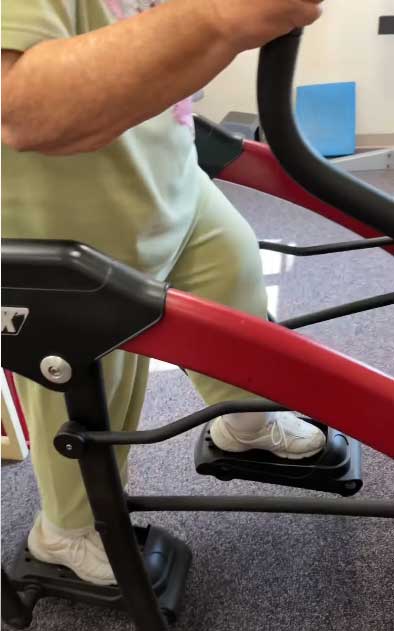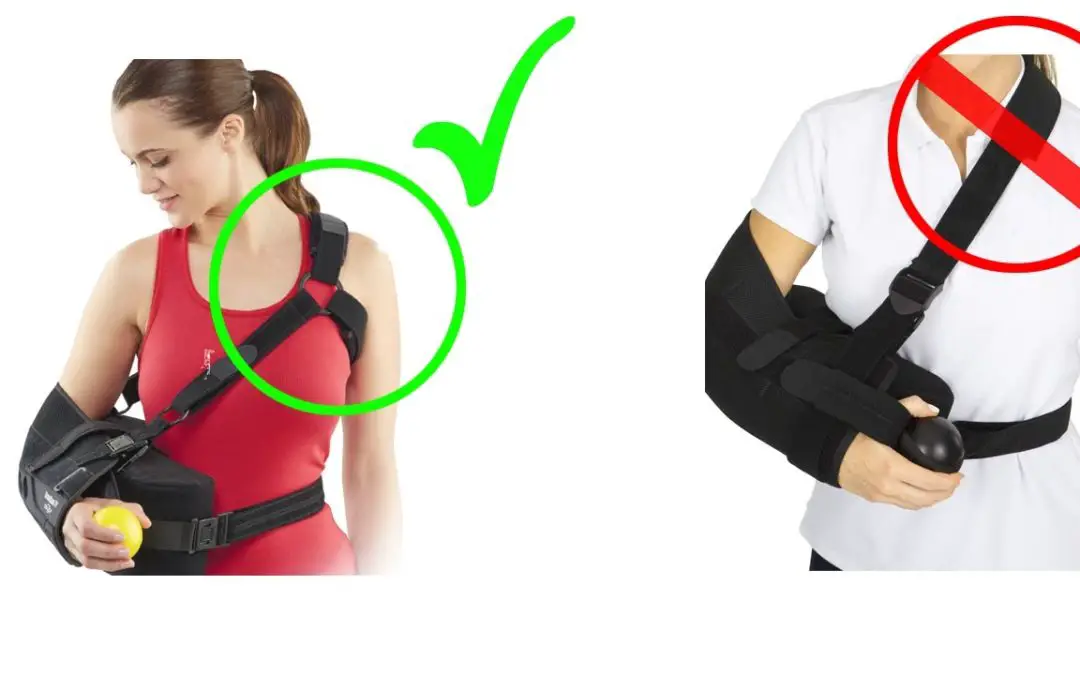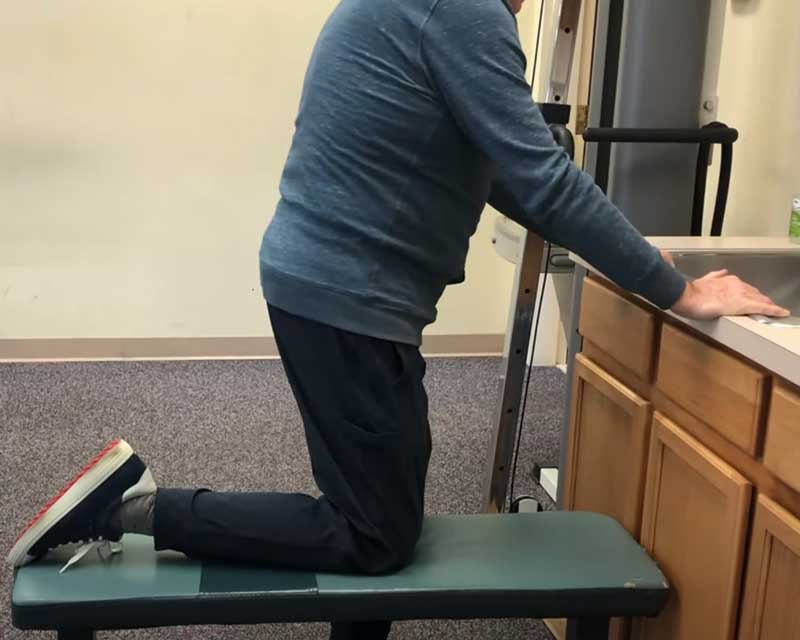Using an Elliptical Trainer After Total Knee Replacement Surgery
An elliptical trainer may be the best of all worlds when choosing an exercise machine after a total knee replacement surgery.
The elliptical trainer allows you to perform weight bearing exercise without the impact of walking or jogging on your new knee joint.
You also receive the benefits of a vertical component with each step or revolution.
Video: Benefits of the Elliptical Trainer Post Knee Replacement
Video Summary:
Tony Maritato, PT emphasizes the elliptical trainer as a highly effective equipment choice after undergoing a total knee replacement. Unlike treadmills and bikes, the elliptical offers weight-bearing exercises, promoting a more functional return to walking. It’s designed to reduce impact forces on joints, encourage symmetrical stride lengths, and is user-powered, ensuring safety and control during workouts.
Usage Instructions for the Elliptical Trainer
When using the elliptical, it’s essential to get on and off safely. To get on, one should position the pedals to step over with the non-surgical leg first, then step up with the surgical side. Gentle rocking can be initiated to warm up the surgical leg, followed by full revolutions. To get off, the surgical foot should be removed first, followed by the non-surgical foot.
Comparing the Elliptical to Other Equipment
While treadmills and stationary bikes have their advantages, Tony prefers the elliptical for post-surgery recovery. The treadmill can pose certain risks, and while bikes are great for range of motion, the elliptical’s weight-bearing nature makes it more functional for walking recovery. Regardless of the equipment, it’s crucial to choose what aligns with one’s recovery stage.
Is An Elliptical Trainer Safe After Total Knee Replacement
The elliptical trainer is a wonderful choice for exercise equipment following a total knee replacement surgery. You gain the advantage of weight bearing exercise to improve the health of the bones while minimizing the impact of walking or jogging.
Another benefit includes control over the vertical aspect of each step. The taller the incline on an elliptical trainer the greater your knee range of motion. This is better than walking when it comes to improving knee range of motion
One other often overlooked benefit of an elliptical trainer is the fact that your feet are moving in a rhythmic and reciprocal pattern.
Normal walking allows you to shorten one stride while taking a longer step on the non-surgical side. This imbalance may lead to other complications down the road.
When can I start using an elliptical trainer after surgery?
Many clients are able to start using an elliptical trainer within the first week following surgery.
The elliptical requires less knee range of motion than a typical stationary bike and is often more comfortable than walking.

How long should I use an elliptical trainer during each workout?
Most of my clients begin with a 2 minute episode the first time they use an elliptical following knee replacement surgery.
I often recommend stopping before you feel like you have to stop. This allows you to build confidence and focus on the quality of your motion instead of the quantity of your motion.
Early in the recovery process we want recommend you take ample rest breaks.
Elliptical Training Plan:
Day 1-10: Perform between 30-seconds and 2-minutes per episode and up to 4 episodes a day at a low intensity.
Day 11 – 28: Gradually increase the duration by 10% each day until you achieve a continuous episode of 10-minutes without shortness of breath. The intensity should feel like a 3/10 with 10/10 being so intense you are forced to stop.
Week 5 and beyond: Gradually increase duration of each episode to a maximum of 30-minutes. If you are able to perform 30-minutes of continuous walking on an elliptical trainer then reduce your duration and increase your resistance or elevation.
How do I know if I am doing too much?
The best way to determine if you are overtraining is to consider how you feel the same night of the next day after a workout. If you are more fatigued or your pain is increasing then you either need to exercise less or take a longer break between workouts.
I find that increasing fatigue and soreness along with possible increased stiffness and loss of range of motion are signs of overtraining.
If you are experiencing these symptoms consider taking a 48-hour rest break of all structured exercises and only perform normal daily activities.
Which is the best elliptical to purchase?
These days there are many varieties of elliptical trainers. Consider features like:
- moving arms
- a flat or angled foot plate
- the length and weight of the machine
- how difficult it may be to move around your home or apartment
- and the resale value of the brand
Is an elliptical better than a stationary bike?
PROS:
- Allows you to perform weight bearing exercise
- Burns more calories per minute
- Provides a total body workout
CONS:
- More expensive
- Takes up more space
- Harder to move around your home
What would a physical therapist choose?
I would choose an elliptical over a stationary bike simply because the long term benefits and use of an elliptical outweigh those of a bike.
Here are some of my recommended Elliptical Machines for home use:

Best Shoulder Pulleys for Frozen Shoulder for 2022
This article has been updated on 02/17/2023 by author - Anthony Maritato, PTAre Shoulder Pulley Exercises Good for Frozen Shoulder (Adhesive Capsulitis)? Yes, shoulder pulley exercises are a great way to unfreeze a frozen shoulder. A licensed physical therapist will...

When can I take off my shoulder sling after rotator cuff repair shoulder surgery?
Every surgeon will have a very specific post surgical protocol and instructions telling you exactly what you are allowed to do and not allowed to do after surgery. Most surgeons will require you to wear your shoulder sling after rotator cuff repair shoulder surgery...
2022 Guide to Buying An Elliptical After Total Knee Replacement Surgery
The Schwinn Elliptical 411 is my overall favorite pick for anyone recovering from a total knee replacement in 2022. What to expect in this article: Benefits of using an elliptical after total knee replacement Challenges of using an elliptical after total knee...

When Is Kneeling Safe After A Total Knee Replacement
Unless your surgeon specifically advised against kneeling you are generally safe to start kneeling after 6-weeks or once your surgical incision is healed.Kneeling After A Total Knee Replacement Depending on the implant and bone quality, kneeling after a knee...
Pinching Behind Your Knee After Total Knee Replacement
A common report I get from clients who are struggling to improve knee flexion is that they are feeling a pinch in the back of their knee as they try to bend it. This pinching in the back of your could may be caused by the implant pinching the soft tissue or a baker's...
What to Expect the First Week After your Knee Replacement Surgery
Week 1 After Knee Replacement Surgery If your surgery was performed in an outpatient surgery center then you would have likely been discharged to your home the day of surgery. In this article I will be discussing what you need during the first week after total knee...
How to Choose the Best Physical Therapist
There are many factors that go into choosing the best physical therapist for your rehabilitation. One such factor is access. If you are having a total knee replacement you will inevitably have questions about your incision or positioning or any number of other...
9 BEST Gift Ideas for Anyone Having A Total Knee Replacement in 2022
This article includes my favorite list of the 9 Best Gift Ideas for Anyone Having a Total Knee Replacement in 2022. Cyotherapy Moist heat Walker tray/basket Ankle & Calf Massager Rolling Pin Water Bottle Journal Audio Book Membership Meal Delivery Cryotherapy...

Tight Calf Muscle After Knee Replacement
Calf pain after a total knee replacement or other knee surgery if very common. Part of the problem is the swelling, part is weakness in the muscle and part is the dramatic change in activity level.
In this video I explain these three causes of calf pain as well as some solutions we usually recommend in the clinic. After watching this video I will share recommended exercises you can ask your therapist about.
Baker’s Cyst After Knee Replacement
A Baker's cyst resolved in only a small number of patients (15%) one year after TKA and symptoms from the cysts persisted in 31%. Cite this article: Bone Joint J 2016;98-B:1185-8.[1]What is a Baker's Cyst?If you have ever felt that painful swollen lump behind your...


